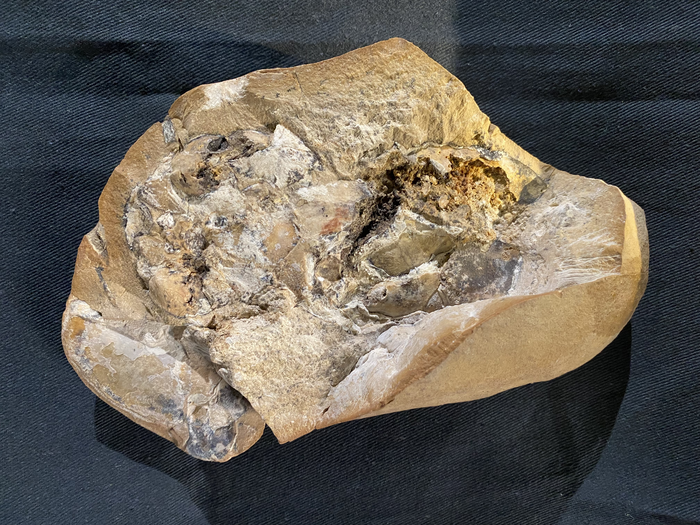
Scientists discovered a heart within a preserved ancient fish estimated to be around 380 million years old. The heart belonged to the Gogo fish, which is no longer in existence.
The specimen represents a crucial phase in the development of the blood-pump organ found in all vertebrate creatures, including humans.
The “jaw-dropping” discovery, published recently in the journal Science, was made in Western Australia. Professor Kate Trinajstic, the lead researcher from Curtin University in Perth, recalled the moment she and her team realized they had made the most important discovery of their lives.
She said, “We were crowded around the computer and [recognized] that we had a heart and pretty much couldn’t believe it! It was incredibly exciting.”
Minerals at this Kimberley site, known as the Gogo rock formation, have preserved several of the fish’s internal organs, including the liver, stomach, intestine, and heart. Typically, bones—rather than soft tissues—transform into fossils.
Professor John Long from Adelaide’s Flinders University called the discovery “a mind-boggling, jaw-dropping discovery.”
He said, “We have never known anything about the soft organs of animals this old until now.”
The First Group of Ancient Fish Known as Placoderms
The first group of ancient fish known as placoderms is the Gogo fish. These were the very first fish to possess jaws and teeth. Fish were only thirty centimeters long before them, but placoderms could reach lengths of 29.5 feet (nine meters).
For sixty million years and more than one hundred million years before the first dinosaurs walked the Earth, placoderms dominated the planet’s ecosystem.
Scans revealed that the heart of the Gogo fish fossil was more complicated than expected for such an ancient species. Its two chambers were stacked one on top of the other much like the human heart.
Scientists hypothesize that this improved the animal’s heart function and was a key factor in the transition from a slow-moving fish to a swift predator.
Professor Long said, “This was the way they could up the ante and become a voracious predator.”
Another significant finding was that compared to more primitive fish, the heart was located substantially further towards the front of the body. This position, which created room for the later evolution of the lungs, is likely to have been associated to the development of the Gogo fish’s neck.
Such discoveries are critical in properly comprehending the early evolution of vertebrates, including how the human body evolved.
See all the latest news from Greece and the world at Greekreporter.com. Contact our newsroom to report an update or send your story, photos and videos. Follow GR on Google News and subscribe here to our daily email!



